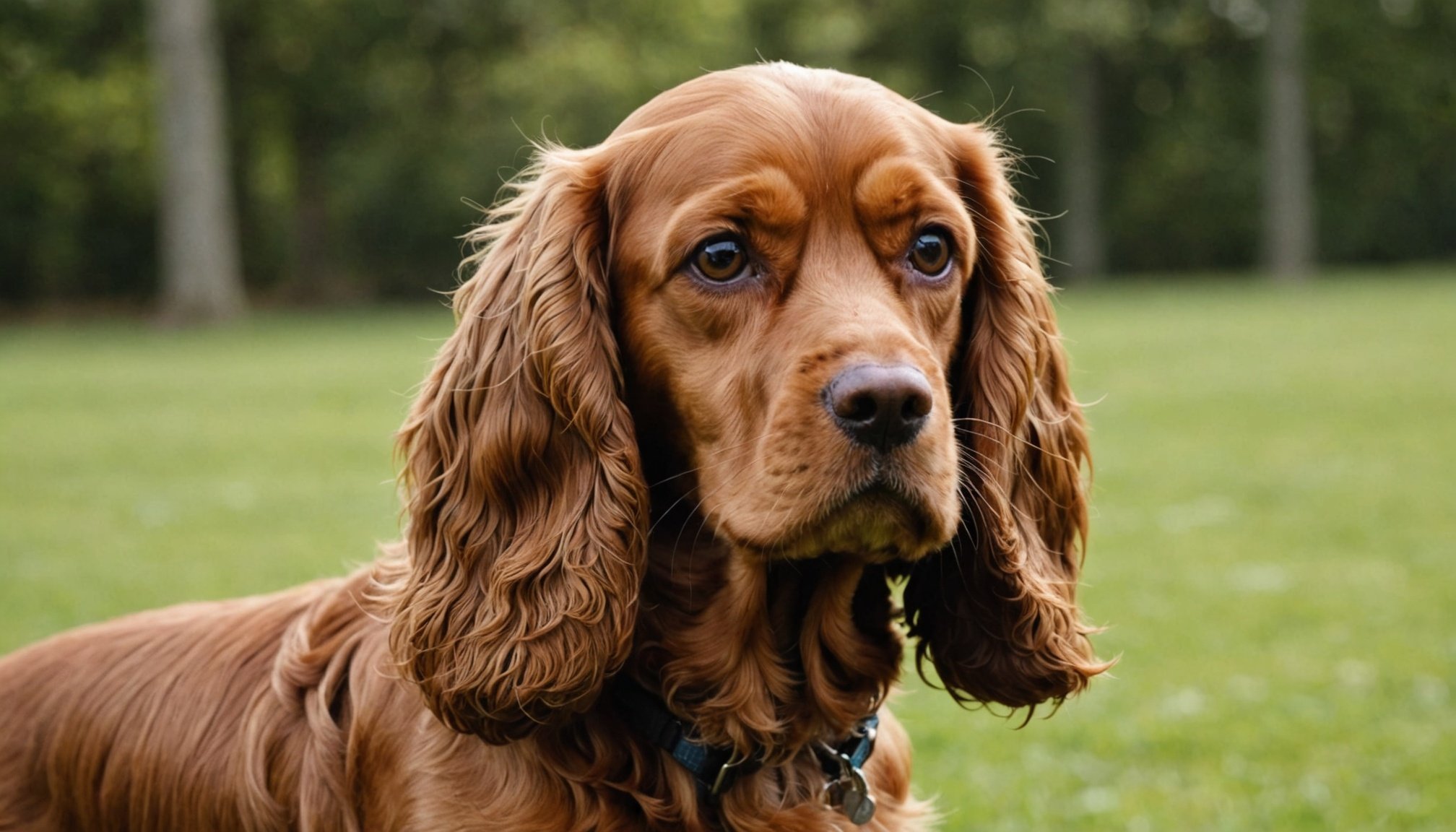Safeguarding Floppy-Eared Breeds like Cocker Spaniels from Ear Infections: A Comprehensive Guide
Understanding the Risks of Ear Infections in Cocker Spaniels
Cocker Spaniels, with their adorable and iconic floppy ears, are a beloved breed for many dog enthusiasts. However, these charming ears also come with a significant health risk: ear infections. The anatomy of a Cocker Spaniel’s ears, with their narrow ear canals and abundant hair, creates a perfect environment for moisture to trap and bacteria to thrive.
“Floppy ears can trap moisture, increasing the likelihood of ear infections,” notes an expert from The Doodle Tribe[1]. This is particularly true after activities like swimming or bathing, where water can easily enter the ear canal and create an ideal breeding ground for bacteria and yeast.
Sujet a lire : Effective Strategies to Help Your American Bulldog Conquer Fear-Based Aggression
Regular Ear Cleaning: The First Line of Defense
Regular ear cleaning is crucial in preventing ear infections in Cocker Spaniels. Here are some steps and tips to ensure your dog’s ears stay clean and healthy:
How to Clean Your Cocker Spaniel’s Ears
- Inspect the Ears: Before cleaning, inspect your dog’s ears for any signs of infection such as redness, swelling, or a strong odor.
- Use the Right Cleaner: Choose an ear cleaner specifically designed for dogs. Human ear cleaners can be too harsh and may cause more harm.
- Gently Wipe the Outer Ear: Use a soft, absorbent cloth to wipe the outer ear, removing any dirt or debris.
- Clean the Ear Canal: Gently pour a small amount of ear cleaner into the ear canal and massage the base of the ear to help the cleaner spread. Then, use cotton balls or soft cloths to wipe away any dirt or cleaner that comes out.
- Dry the Ears: After cleaning or bathing, ensure the ears are thoroughly dried to prevent moisture buildup. You can use a soft cloth to blot the inner ear gently[4].
Frequency of Cleaning
- Daily Inspection: Check your dog’s ears daily for any signs of infection or irritation.
- Weekly Cleaning: Clean your dog’s ears at least once a week, or more frequently if they are prone to ear problems.
Preventing Ear Infections Through Lifestyle Changes
While regular cleaning is essential, there are several lifestyle changes and precautions you can take to further prevent ear infections in your Cocker Spaniel.
Avez-vous vu cela : Engaging Your Senior Australian Cattle Dog: Strategies to Boost Mental Stimulation and Combat Cognitive Decline
Protecting Ears During Activities
- Swimming and Bathing: After swimming or bathing, ensure that your dog’s ears are thoroughly dried. You can use a soft, absorbent cloth to wipe the outer ear and gently blot the inner ear[4].
- Rainy Days: Consider using rain caps or shower caps that double as rain caps to cover your dog’s ears, shielding them from moisture and bacteria. These caps can attach to your dog’s collar or rely on a drawstring to stay in place[2].
General Health and Hygiene
- Regular Grooming: Regular grooming helps maintain your dog’s overall health and can prevent skin issues that might lead to ear infections. Brushing removes loose fur, dirt, and dead skin cells, promoting healthy skin and preventing irritation and infections[5].
- Diet and Allergies: Ensure your dog is on a balanced diet and monitor for any allergies that could lead to skin issues or ear problems. Allergies can cause excessive scratching and irritation, which can increase the risk of ear infections.
Recognizing the Signs of Ear Infections
Early detection is key in treating ear infections effectively. Here are some common signs to look out for:
Common Symptoms of Ear Infections
- Redness and Swelling: The ear may appear red and swollen.
- Strong Odor: A strong, unpleasant smell from the ear.
- Discharge: Yellow or brown discharge from the ear.
- Scratching and Rubbing: Your dog may frequently scratch or rub their ears.
- Head Shaking: Your dog may shake their head more than usual.
- Whining or Pawing: Your dog may whine or paw at their ears due to discomfort.
Consulting Your Vet: When to Seek Professional Help
If you notice any of the symptoms mentioned above, it is crucial to consult your veterinarian promptly.
What to Expect at the Vet
- Examination: The vet will perform a thorough examination of your dog’s ears, possibly using an otoscope to look into the ear canal.
- Diagnosis: The vet will diagnose the type of infection (bacterial, yeast, or fungal) and recommend the appropriate treatment.
- Treatment: Treatment may include antibiotics, antifungal medications, or ear cleaners. In severe cases, surgery might be necessary.
Preventive Measures Recommended by Vets
- Regular Check-Ups: Regular veterinary check-ups can help in early detection of ear problems.
- Vaccinations: Ensure your dog is up-to-date on all vaccinations to prevent infections that could lead to ear problems.
- Parasite Control: Regularly check for and treat ear mites, which can cause infections.
Additional Tools and Products for Ear Care
Besides regular cleaning and lifestyle changes, there are several products and tools that can help in preventing and treating ear infections.
Raincoats and Rain Caps
- Raincoats: Using raincoats with detachable hoods can help keep your dog’s ears dry during rainy days. These hoods can attach to the raincoat with buttons or Velcro, allowing for easy removal or addition[2].
- Rain Caps: Rain caps or shower caps can be used to cover your dog’s ears, shielding them from moisture and bacteria.
Microfiber Towels
- Drying After Activities: Microfiber towels are excellent for drying your dog’s fur and skin after a swim or bath, reducing the risk of moisture buildup in the ears[2].
Table: Comparing Different Types of Ear Cleaners
Here is a table comparing different types of ear cleaners that you might consider for your Cocker Spaniel:
| Ear Cleaner Type | Ingredients | Suitable For | Pros | Cons |
|---|---|---|---|---|
| Antibacterial Ear Cleaner | Antibiotics, aloe vera | Bacterial infections | Effective against bacterial infections, soothing | May not be suitable for yeast or fungal infections |
| Antifungal Ear Cleaner | Antifungal agents, tea tree oil | Fungal infections | Effective against fungal infections, natural ingredients | May not be suitable for bacterial infections |
| General Ear Cleaner | Glycerin, witch hazel | General cleaning, maintenance | Gentle, suitable for regular use | May not be effective against severe infections |
| Natural Ear Cleaner | Olive oil, coconut oil | Sensitive ears, maintenance | Natural ingredients, gentle | May not be as effective as medicated cleaners |
Practical Insights and Actionable Advice
Here are some practical tips and actionable advice to help you safeguard your Cocker Spaniel from ear infections:
- Be Consistent: Regular ear cleaning and inspections are key. Make it a part of your weekly routine.
- Monitor for Signs: Keep an eye out for any signs of infection and consult your vet immediately if you notice anything unusual.
- Use the Right Products: Choose products specifically designed for dogs and follow the instructions carefully.
- Keep Your Dog Dry: After swimming or bathing, ensure your dog’s ears are thoroughly dried to prevent moisture buildup.
Ear infections are a common health issue in floppy-eared breeds like Cocker Spaniels, but with the right strategies, you can significantly reduce the risk. By understanding the risks, implementing regular ear cleaning, making lifestyle changes, recognizing symptoms early, and consulting your vet when necessary, you can help keep your Cocker Spaniel’s ears healthy and infection-free.
As a responsible pet owner, it’s crucial to be proactive about your dog’s health. By following these guidelines and staying vigilant, you can ensure your Cocker Spaniel enjoys a happy, healthy life with minimal ear problems. Remember, prevention is always better than cure, especially when it comes to something as sensitive and important as your dog’s ears.











